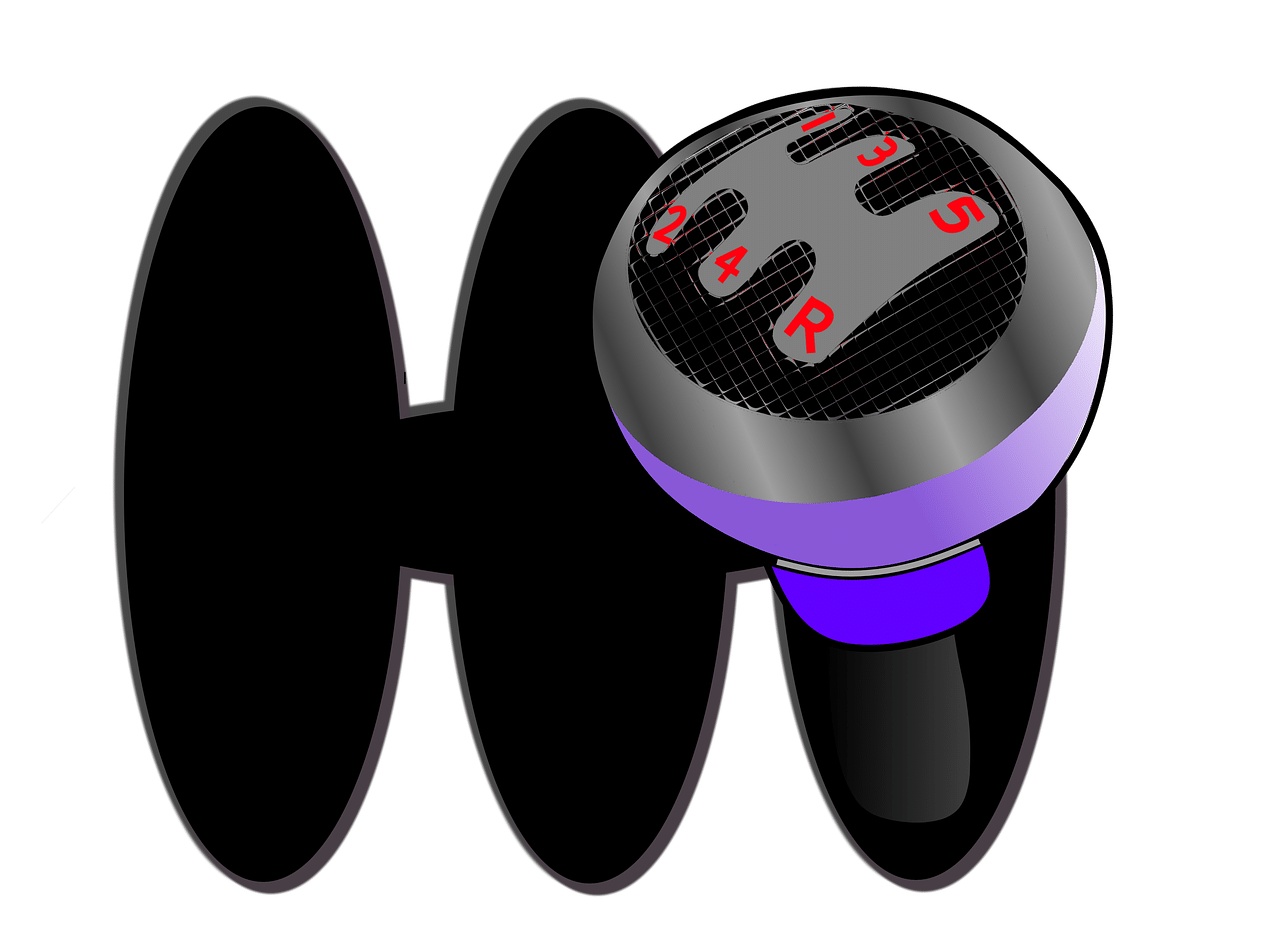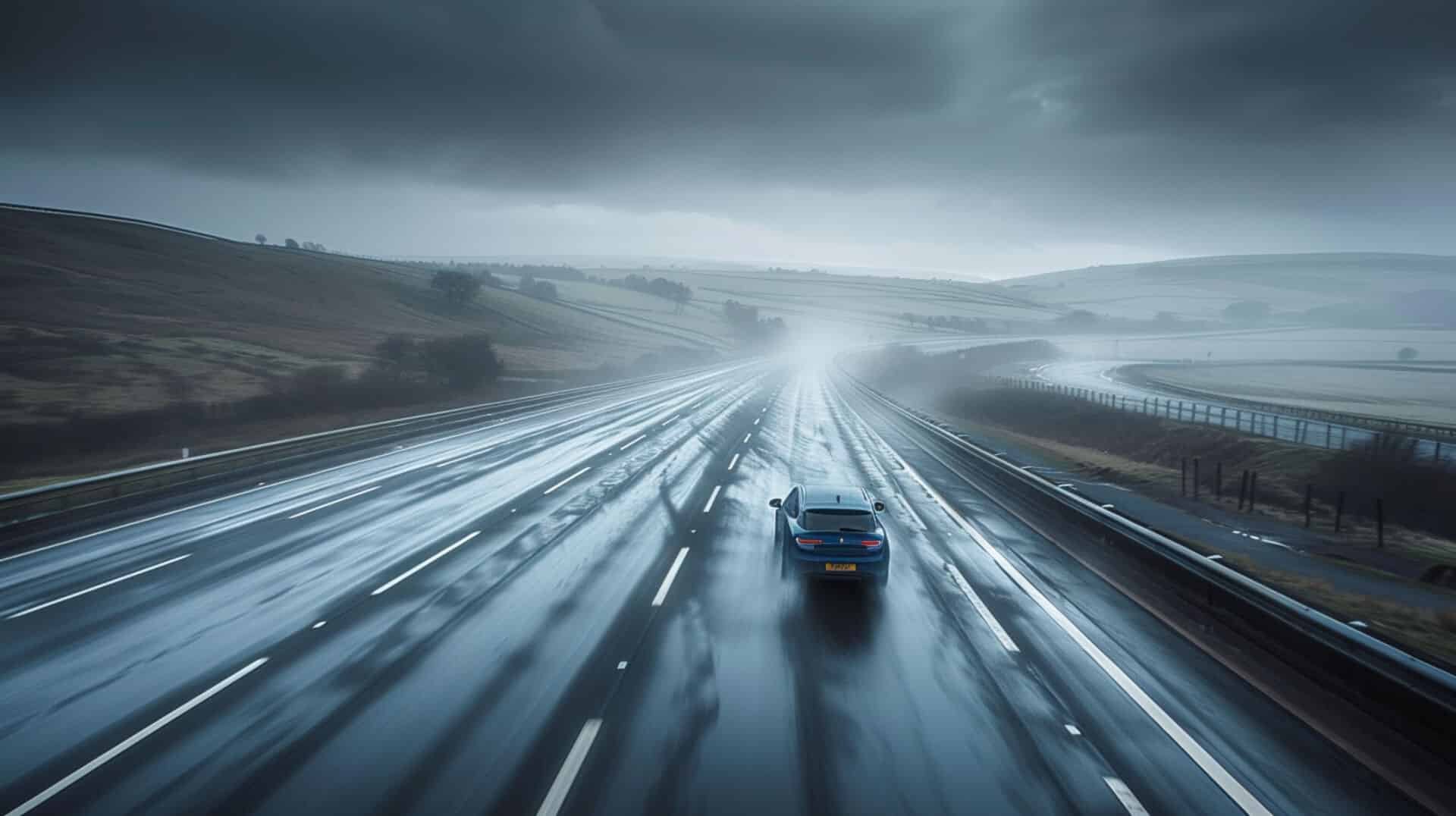
What is Driving in Fog?
Driving in fog refers to the act of operating a vehicle in weather conditions where visibility is significantly reduced due to the presence of fog. Fog is a type of cloud that forms close to the ground and is composed of tiny water droplets or ice crystals suspended in the air. It can occur at any time of the year but is most common in the early morning and late evening when the air is cooler and humidity is higher.
The dangers and risks associated with driving in fog are primarily related to the reduced visibility. Fog can reduce visibility to as little as 10 metres, making it difficult to see other vehicles, pedestrians, and obstacles on the road. This reduced visibility can lead to accidents and collisions if drivers are not cautious. Additionally, fog can make roads slippery, increasing the risk of skidding and losing control of the vehicle. It can also make it difficult to see road signs, traffic lights, and other important road markings, which can lead to confusion and poor decision-making. Furthermore, fog can impair judgement of distances and speeds, making it challenging to accurately assess the movements of other vehicles and increasing the risk of collisions.
Understanding the visibility requirements for driving in fog is crucial for ensuring safety on the road. In the UK, the Highway Code states that driving in fog is not permitted if visibility is seriously reduced. This means that drivers should avoid driving if they cannot see more than 100 metres (328 feet) ahead. It is suggested to adhere to this requirement to avoid accidents and potential harm. When driving in fog, it is recommended to slow down and adjust driving style to suit the conditions. Using headlights and fog lights can help other drivers see your vehicle from a distance. Additionally, being aware of the road surface and its potential slipperiness is essential for maintaining control of the vehicle.
Overall, driving in fog poses significant risks due to reduced visibility. It is important for UK learner drivers to understand the characteristics of fog, the dangers associated with driving in fog, and the visibility requirements to ensure their safety and the safety of others on the road.
What are the Visibility Requirements for Driving in Fog?
The visibility requirements for driving in fog vary depending on the country. In the UK, the minimum visibility required for safe driving in fog is 100 metres (328 feet). This means that drivers should only use their fog lights when visibility is reduced to less than 100 metres. The UK Highway Code, Rule 226, states that drivers must use their lights when visibility is seriously reduced.
It is important to note that the use of fog lights should be limited to when visibility is seriously reduced. When visibility improves, drivers must switch off their fog lights. This is to avoid dazzling other drivers and to ensure that the lights are used appropriately.
When driving in fog, it is crucial to take additional precautions to ensure safety. Drivers should use their windscreen wipers and demisters to maintain clear visibility. They should also be aware of other drivers who may not be using headlights and adjust their driving accordingly. Checking mirrors before slowing down and using brakes gently and gradually are important to signal to drivers behind that they are slowing down.
Furthermore, drivers should maintain a safe distance from the vehicle in front and be prepared for the road conditions to change suddenly. It is also recommended to carry a high-visibility jacket and a warning triangle in the car in case of an accident.
Overall, the visibility recommendations for driving in fog depend on the country, with the UK requiring a minimum visibility of 100 metres. It is essential for drivers to follow the specific visibility requirements of their country and take necessary precautions to ensure safe driving in foggy conditions.
What are the Best practices for Driving in Fog?
Best practices for Driving in Fog
Driving in foggy conditions can be challenging and potentially dangerous. Reduced visibility makes it difficult to see other vehicles, pedestrians, and obstacles on the road. To ensure safe driving in fog, it is important to follow these best practices:
Reduce Speed
When driving in fog, it is crucial to reduce your speed. Fog significantly reduces visibility, and driving at a slower speed allows you more time to react to any potential hazards. It is also important to maintain a safe distance between your vehicle and the vehicle in front of you. Stopping distances can be much longer in foggy conditions, so keeping a safe following distance is essential.
Use Lights
Using your lights correctly is crucial when driving in fog. It is recommended to use your dipped headlights to help you see the road ahead. Dipped headlights provide better visibility without reflecting off the fog and reducing visibility further. Additionally, it is important to use your rear fog lights to make your vehicle more visible to other drivers. However, remember to switch off your fog lights when visibility improves to avoid dazzling other drivers.
Listen for Traffic
In situations where visibility is extremely limited, it is helpful to wind down your windows at junctions and crossroads. This allows you to listen for approaching traffic, compensating for the reduced visibility. By relying on your hearing, you can make more informed decisions when it comes to emerging onto the road.
Be Prepared for Changing Conditions
Fog can change rapidly, even over short distances. It is crucial to be prepared for these changing conditions. Stay alert and adapt your driving accordingly. Keep a close eye on the road ahead and be ready to adjust your speed and following distance as necessary. Additionally, it is important to listen to weather reports and be aware of any foggy conditions before setting out on your journey.
What are the Most Common Mistakes Made When Driving in Fog?
Identification of common mistakes made by drivers in foggy conditions:
In the UK, the Highway Code (rule 226) states that drivers must use their headlights when visibility is seriously reduced. This means that it is a legal requirement to use headlights in foggy conditions. However, many drivers still fail to use their headlights, which can make it difficult for other drivers to see them.
Another common mistake made by drivers in the UK is driving too fast in foggy conditions. This can reduce visibility and increase the risk of an accident. It is important for drivers to reduce their speed and increase their following distance to ensure they have enough time to react to any hazards.
Not using fog lights is also a common mistake made by drivers in the UK. Fog lights are specifically designed to help drivers see in foggy conditions. They should be used when visibility is reduced and turned off when visibility improves. However, many drivers either forget to turn on their fog lights or fail to turn them off when they are no longer needed.
Overview of the Rules for Using Fog Lights in Fog
Fog lights are specifically designed to aid visibility in foggy conditions. They are usually mounted lower than headlights and angled downwards to prevent reflection off the fog. The general rule is to use fog lights when visibility is reduced to less than 100m. This helps other drivers to spot your vehicle from a distance. However, it is crucial to switch off your fog lights as soon as visibility improves or when approaching vehicles going in the opposite direction. It is important to note that driving with fog lights on when it is not foggy is illegal.
Discussion of the Rules for Using Windscreen Wipers and Demisters in Fog
Before driving in fog, it is essential to ensure that your mirrors are clean and your front and rear windscreen are demisted. This can be achieved by using windscreen wipers and demisters. Windscreen wipers help to keep the windscreen clear of rain, snow, and other debris, while demisters prevent condensation from obstructing your view. It is important to use the appropriate speed setting for the windscreen wipers to effectively clear the windscreen without impairing visibility.
In summary, the rules for driving in fog include using headlights when visibility is reduced, even if it is greater than 100m. Fog lights should be used when visibility is seriously reduced, but they must be switched off when visibility improves. Windscreen wipers and demisters should be used to maintain clear visibility. By following these rules, you can ensure your safety and the safety of others while driving in foggy conditions.
Techniques for Navigating Bends and Curves in Fog
Navigating bends and curves in fog requires additional caution. Here are some techniques to follow:
- Slow down before entering a bend or curve: Since visibility is reduced in fog, it is crucial to slow down before entering a bend or curve. This will give you more time to react to any sudden changes in the road conditions and help maintain control of your vehicle.
- Use your brakes gently and avoid sudden actions: When driving in fog, it is important to use your brakes gently and avoid sudden actions that can cause loss of control. Gradual braking and smooth steering inputs are key to maintaining stability.
- Use white lines as a guide: If visibility is extremely poor and you can’t see the road ahead, use the white lines on the side of the road as a guide. This can help you stay within your lane and navigate bends and curves more safely.
By following these safety tips and techniques, drivers can minimise the risks associated with driving in foggy weather and ensure their safety as well as the safety of other road users.
Overview of the Highway Code Rules for Driving in Fog
The Highway Code provides a set of rules for driving in fog to ensure the safety of all road users. Here is an overview of the Highway Code rules for driving in fog:
- Reduce your speed and keep a safe distance from the vehicle in front: When driving in fog, it is important to reduce your speed and maintain a safe distance from the vehicle in front. This will give you more time to react to any hazards that may arise.
- Use dipped headlights and fog lights when visibility is seriously reduced: Dipped headlights should be used in foggy conditions to improve visibility for both the driver and other road users. Fog lights, on the other hand, should only be used when visibility is seriously reduced. It is important to use these lights appropriately to ensure the safety of all road users.
- Be aware of other road users: In foggy conditions, it is crucial to be aware of other road users, including pedestrians, cyclists, and motorcyclists. These vulnerable road users may be harder to see in fog, so it is important to exercise caution and give them extra space.
- Use your horn only when absolutely necessary: The Highway Code advises drivers to use their horn only when absolutely necessary. In foggy conditions, excessive use of the horn can create confusion and may not be effective in alerting other road users to your presence.
- Be prepared to stop if necessary: When driving in fog, it is important to be prepared to stop if necessary. Reduced visibility can make it difficult to see potential hazards ahead, so it is important to be vigilant and ready to react to any unexpected situations.
By following these Highway Code rules, drivers can ensure their safety and the safety of others when driving in foggy conditions.
What Our Experts at Smart Drive UK Say About Driving in Fog
Expert Advice and Recommendations for Driving in Fog
Driving in fog can be challenging and dangerous, but there are several precautions you can take to ensure your safety and the safety of other road users. Our experts at Smart Drive UK have provided the following advice and recommendations for driving in foggy conditions:
Reduce Your Speed and Maintain a Safe Distance
The most important thing to remember when driving in fog is to reduce your speed. Fog greatly reduces visibility, so it is crucial to slow down and give yourself more time to react to any potential hazards that may arise. Additionally, it is essential to maintain a safe distance from the vehicle in front of you. Rear lights can give a false sense of security, so it is important to keep a safe distance to allow for sudden stops or manoeuvres.
Use Your Headlights and Fog Lights
Using your lights is crucial when driving in fog. It not only helps other drivers see you more easily but also improves your visibility of the road ahead. It is recommended to use your low beam headlights, as high beams can reflect off the fog and make it even harder to see. Additionally, if visibility drops below 100m, you can turn on your fog lights. However, it is important to note that fog lights should only be used when visibility is seriously reduced.
Be Aware of Other Drivers
When driving in fog, it is important to be aware of other drivers on the road. Some drivers may not be using their headlights, which can increase the risk of accidents. Therefore, it is crucial to stay vigilant and anticipate the actions of other drivers. Checking your mirrors before slowing down or using your brakes is also important, as it allows your brake lights to warn drivers behind you that you are slowing down.
Be Prepared for Changing Road Conditions
Foggy conditions can change rapidly over short distances. It is important to listen to travel bulletins and take note of variable message signs that provide information about weather, road, and traffic conditions ahead. Additionally, it is crucial to be prepared for other challenging road conditions that may accompany fog, such as snow, ice, or rain. Checking your grip on the road surface and adjusting your driving accordingly can help ensure your safety.
Approach Junctions with Caution
Approaching junctions with limited visibility requires extra caution when driving in fog. It is recommended to stop in the correct position and listen for traffic before proceeding. Once you are sure it is safe to emerge, do so positively and avoid hesitating in a position that puts you directly in the path of approaching vehicles.
Use Windscreen Wipers and Demisters
To improve visibility in foggy conditions, it is important to use your windscreen wipers and demisters. This will help clear any condensation or fog on your windshield, allowing you to see more clearly.
By following these expert tips and recommendations, you can navigate foggy conditions safely and reduce the risk of accidents. Remember to always prioritise your safety and the safety of others on the road.
What to Do if You Break Down in Fog
Steps to Take if a Breakdown Occurs in Foggy Conditions
- Pull over to the side of the road as soon as possible, ensuring you are as far away from the flow of traffic as possible. If you are on a motorway, try to pull over to the hard shoulder.
- Turn on your hazard lights to alert other drivers of your presence. This will help to ensure that other drivers are aware of your stopped vehicle and can take the necessary precautions.
- If you have a warning triangle, place it at least 45 metres behind your vehicle. This will provide additional warning to other drivers and help to increase your visibility.
- Put on a reflective jacket to make yourself more visible to other drivers. This will help to ensure that other drivers can see you in the foggy conditions.
- If you have a mobile phone, call for help. Contact the police, a tow truck, or a roadside assistance service and provide them with your exact location so they can find you quickly.
How to Prepare for Driving in Fog
Checklist of Things to check Before Driving in Fog
Before driving in fog, it is important to ensure that your vehicle is prepared for the journey. Here is a checklist of things to check before driving in fog:
- Clean Mirrors and Demisted Windscreens: Make sure your mirrors are clean and your front and rear windscreens are demisted. This will help improve visibility during foggy conditions.
- Windscreen Wash: Fill up your windscreen wash so that you can use your wipers to keep your screen clear. This will help maintain clear visibility while driving in fog.
- Working Lights: Check that all your lights are working properly, including headlights, taillights, brake lights, and indicators. Ensure that you have the correct bulbs installed to provide adequate visibility to other drivers.
- Tyre Condition and Pressure: Ensure that your tyres are in good condition and have the correct pressure. Properly inflated tyres with good tread depth will provide better traction and control in foggy conditions.
- Brake Functionality: Check that your brakes are working properly. It is crucial to have reliable brakes to ensure safe stopping distances in foggy weather.
Essential Items to Bring When Driving in Fog
When driving in fog, it is important to have certain essential items in your car. Here is a list of items to bring when driving in fog:
- High-Vis Jacket: A high-visibility jacket will make you more visible to other drivers in low visibility conditions.
- Warning Triangle: A warning triangle can be placed behind your vehicle to alert other drivers of your presence in foggy conditions.
- Torch: A torch can be useful in case of emergencies or if you need to inspect your vehicle in low visibility.
- Emergency Food and Drink: It is always a good idea to have some emergency food and drink in your car in case you get stranded in foggy conditions for an extended period of time.
- First Aid Kit: A well-stocked first aid kit is essential for any journey, including driving in fog. It can help you provide immediate medical assistance in case of an accident or injury.
- Jump Leads: Having jump leads in your car can be helpful if your battery dies or if you need to assist another driver with a dead battery in foggy conditions.
- Shovel: In extreme cases, where fog may be accompanied by snow or ice, having a shovel can be useful to clear your path or dig yourself out if you get stuck.
##
To all UK learner drivers, if you are in need of personalised advice on driving in fog or if you are looking to book a driving lesson, Smart Drive UK is here to assist you. Our team of experienced driving instructors are dedicated to providing you with the best advice and guidance to help you become a safe and confident driver.
How to Get in Touch
There are several ways to contact us at Smart Drive UK. You can give us a call on either 01903 691002. Alternatively, you can send us an email through our “Contact Us” page on our website.



